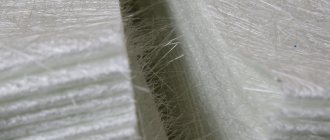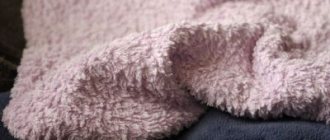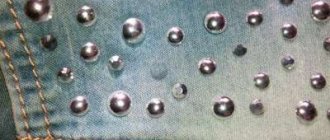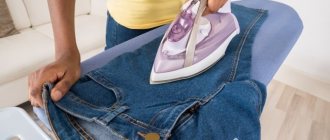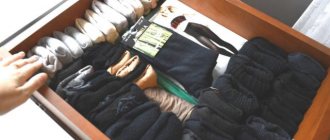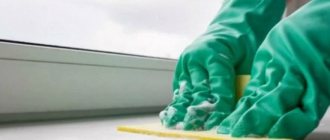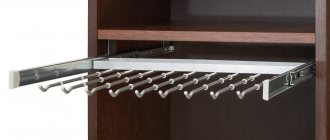Polyester is the general name for a whole group of synthetic fabrics that imitate a variety of materials - from silk and organza to brocade. One thing unites them - composition. All types of polyester are made from polyester fiber, which is obtained from petroleum. Synthetic fabrics have been leading the way in the field of clothing, curtains, bedding, furniture upholstery, bedspreads, carpets and many other household products for many years. However, not everyone knows whether it is possible to iron polyester and how to do it correctly.
Features of the material
Polyester can be disguised as any type of fabric - it can be tulle, organza, satin, brocade, and many other options. For example, in the production of bed linen, synthetic polyester fabric is well disguised as cotton fabric, but the markings on the label put everything in its place.
Why is polyester so good? This material has many advantages:
- Low price. To understand the range of prices, it is enough to compare the cost of natural linen curtains and their polyester counterparts - it will differ several times.
- Durability and strength: polyester products do not lose color and shape when washed, do not fade in the sun, and do not shrink.
- The material does not stretch over time.
- Polyester washes well from dirt and dries quickly.
- Has low weight.
- Polyester is of no interest to moths.
There are also many disadvantages: the fabric is poorly breathable, in hot weather such clothes are uncomfortable, and due to the fact that the fabric does not absorb moisture well, it is uncomfortable to sleep on polyester underwear. This material also has increased rigidity, which is why not everyone understands how to iron polyester. It is also difficult to paint, but this drawback relates more to the production stage.
Advantages of textile curtains
How to properly fill a self-leveling floor: tips and video instructions
Thanks to modern technologies, fabric curtains for the bathroom have acquired properties that are completely uncharacteristic for them. They do not absorb water and effectively protect against its splashing around the room. Fabric bathroom curtains have a number of advantages:
- Variety of appearance. These are not only designs and color palettes, but also textures that polymer film curtains do not have.
- The price of fabric curtains is quite low. It allows you to change products depending on your mood, time of year and other factors.
- Modern technology makes all fabric shower and bath curtains waterproof. They do not allow steam or drops of water to pass through and protect the rest of the bathroom from increasing humidity. This prevents the appearance of mold and other negative consequences.
- Textile bathroom curtains are more pleasant to the touch and do not stick to the body.
- All materials are completely safe, do not emit harmful substances and do not cause allergies.
- It is convenient to use textile products. They are treated with special weighting compounds along the bottom edge, so they hold their shape well and do not stick together.
- There are many options for such products. They come in a variety of styles to suit the needs of any customer.
- Caring for such curtains is extremely simple. They are washed in a washing machine and dried flat. They can dry directly at their “workplace”, i.e. on the bar above the bathtub. Some curtains can be ironed on low heat.
Cons of textile options
There are very few disadvantages to fabric curtains for the bathroom. First of all, they include the need for drying. Moisture should not linger on the surface, otherwise there is a risk of mold growth.
When the water procedures are completed, you must wait until the water drains from the surface. Then the curtain must be pulled apart and straightened so that it dries well.
To prevent mold from appearing on the curtain, it needs to be washed quite often. However, frequent washing gradually leads to damage to the moisture-repellent layer. The curtain loses its characteristics.
To reduce all these negative consequences, high-quality ventilation must be created in the bathroom.
Proper washing is the key to success
How to iron polyester? In fact, this is not where you need to start. In order for the material to be easily smoothed, it must be washed properly. This is not to say that synthetic fabric is too capricious in washing, like, for example, wool and silk, but some rules will have to be followed:
- Almost all synthetic fabrics are deformed by hot water - they shrink, wrinkle, unsightly folds appear on them, etc. It is impossible to smooth out such defects later. Therefore, it is necessary to wash polyester at a temperature not exceeding 40 ⁰C. On the washing machine, select the “synthetic” mode - 30 ⁰С or 40 ⁰С. When washing by hand, the temperature can be controlled with your hand - it should not be hotter than the temperature at which the child is bathed.
- All synthetics are quite electrified, so during the last rinse you need to add a little antistatic agent.
- Polyester products must be spun at minimum speed in the washing machine. When manually squeezing, the synthetics are not twisted or wrung out with force - just a light squeeze is enough.
What is the fabric made of?
Polyester, or polyester fiber, is a synthetic thread formed by melting thermoplastic or other polymer derivatives. In simple terms, polyester is a man-made fiber that is often used in light industry. The material can be either a translucent veil or a thick cloak. The appearance depends on the chemical composition of the raw material, the type of fiber and the method of weaving.
Typically, polyester looks like wool, but has characteristics similar to cotton. The fabric is pleasant, smooth to the touch, light.
The combination of fibers in the structure is resistant to various weather conditions. Products do not deteriorate when exposed to ultraviolet rays, heavy rain or frost. The material goes well with natural fibers.
Drying
If you dry polyester items properly, you may not need to iron them. After spinning, the products are shaken and hung on the dryer, carefully smoothing out all wrinkles. The jacket and windbreaker should be hung directly on hangers, so the items will be leveled under their own weight.
Synthetic fabrics respond very well to forced drying if the air is not too hot. However, you need to be careful here, since many products are sewn from several types of fabrics at once, and not all of them will withstand such a procedure. For example, items with leather inserts should only be dried naturally.
Conclusion
In order for things made of polyester to always look neat and last a long time, you must adhere to several rules:
- wash on delicate cycle;
- wash clothes, sorting them by color;
- dry after straightening the fabric, avoiding direct sunlight;
- iron at minimum temperatures;
- When ironing, use a backing made of gauze or cotton fabric.
Caring for polyester fabrics is not at all difficult, and your favorite items will delight you with their attractive appearance for many years.
Rate this post
Traditional ironing of polyester items: rules and recommendations
Despite all efforts, there are situations when ironing cannot be avoided. How and at what temperature should you iron polyester? In order for everything to go without unpleasant surprises, you need to adhere to the following recommendations:
- Carefully study the label with information about the composition of the fabric and how to handle it: the ironing mode is indicated by a drawing of an iron with dots inside. For polyester, the iron on the tag is drawn with one dot - this indicates the minimum temperature setting. It corresponds to 110 ⁰C or lower.
- You cannot iron polyester at temperatures above 110 ⁰C, otherwise it will become deformed.
- On the iron, you should set the regulator to the first position or to the one that corresponds to silk.
- Often, synthetic products are accompanied by a test patch - on it you can check the correctness of the selected temperature. If it is not there, you need to start ironing the item from a small and inconspicuous area - from the inside and at the edges of the item.
- If possible, iron polyester from the inside out and only through an additional protective layer, for example through damp cotton cloth, gauze or dry paper. This will help avoid thermal deformation.
- When ironing, you do not need to press on the iron.
- For heavily wrinkled items, you can slightly increase the temperature, but you should first conduct a test - on a special test piece or an inconspicuous area.
Ironing
You must first read the information on the product label. Manufacturers usually indicate the recommended temperature range.
Experts recommend adhering to the following rules:
100% polyester can only be ironed through damp cotton cloth.- Outerwear must first be ironed from the wrong side. To avoid damaging the lining with the iron, it is also recommended to use a cotton napkin. The front side is also ironed using a damp cotton cloth.
- When processing particularly complex and hard-to-reach areas - collars, armholes, you can slightly increase the temperature of the iron.
- If the product has folds or pleating, they need to be folded using pins and ironed.
Steaming
Steaming is the second most popular method of ironing polyester fabrics. This is done using a steamer or an iron with a vertical steam function. The procedure is carried out as follows: the suspended product is treated with steam at a distance of several centimeters from the surface of the material. The device mode is “for delicate fabrics”.
The steaming process not only helps remove wrinkles from polyester, but also refreshes the item, rids it of surface dirt and unpleasant odors.
Setting the temperature on the iron
Recommended ironing parameters are indicated on the product label - a significant increase in the given parameters is not allowed. The following temperatures are preferably indicated:
- 60-80 degrees - for products made of 100%, 84% polyester. The parameters refer to the delicate temperature regime - “silk” (on the iron it can be indicated by one dot).
- 110 degrees - when the share of synthetics is no more than 60%. It is allowed to use medium temperature; the mode is indicated by two dots on the iron regulator.
Start ironing with the minimum value of the indicators - the “silk” option. It is delicate, you don’t have to worry about damaging the material, but it’s not always possible to remove strong creases using this mode. If an attempt to straighten the folds is unsuccessful, the temperature is slightly increased, the iron is passed over the cuff, the edge of the collar - only then do they begin to smooth out the main part. Excessive heat can damage the fabric.
Folk method
Alas, not everyone has steamers and modern irons. Nevertheless, it is possible to iron a product made of synthetic fabric well even with a minimum of possibilities.
How to iron polyester using traditional methods? To do this, the product must be placed suspended above a container of very hot water. This can be either a standard bathtub in an apartment or any tank. But the procedure must be carried out in a small room, so that steam fills the room and gradually smoothes out the wrinkles. Then the product is thoroughly dried. In essence, this is steaming, only more troublesome and time-consuming.
We use a steamer
The steamer has gained popularity in home use. With its help, you can not only quickly smooth the fabric, but also clean it from light dirt and get rid of unpleasant odors. For polyester, steaming is better than ironing. This is especially convenient for outerwear. But the device must have a choice of temperature and steam supply.
For steaming, follow these rules:
- The product must be hung on hangers. The front or back side is optional. It doesn't matter here.
- The mode should be selected for delicate fabrics.
- All fasteners on the product must be fastened.
- The steamer should be kept at a distance of 10-15 cm from the clothes. If the folds are too strong, the device can be brought closer, but this must be done carefully and smoothly.
- Start ironing from the back, then move to the sleeves, front and collar. You need to move from top to bottom.
- The pleated fabric is first pinned together and then steamed.
Modern irons are equipped with a “vertical steam” function, so if you don’t have a steamer, you can use this mode. An alternative to using an iron is steaming in the bathroom:
- Hang the product above the bathtub.
- Turn on the hot water until steam comes out.
- Fill a little less than half a bath.
- Close the door and leave for 20-30 minutes.
- Next, you need to hang the product in a well-ventilated place and leave it until completely dry.
Polyester has the unique ability to camouflage itself under any fabric. Therefore, when choosing clothes, it is difficult to recognize it. Of course, many try to choose a product from more natural fabrics, but it is polyester that provides wear resistance, easy cleaning from dirt, quick drying, does not allow the fabric to fade, etc. Such positive qualities fully justify the difficult ironing. To make the process easier, you can purchase a steamer.
Recommendations for ironing polyester windbreakers
Polyester is almost impervious to water, so it is often used when sewing raincoats, windbreakers and jackets. How to iron a polyester windbreaker?
The recommendations are the same: after washing, dry it on a hanger, and then the product will not need ironing. If this cannot be avoided (for example, the item has become wrinkled during long-term storage), then it is best to steam the jacket - with an iron or steamer.
If you don’t have an iron with a vertical steam function, you need to iron the windbreaker like this: put damp gauze on the wrinkled area, smooth out the wrinkles and apply a hot iron. It is better not to touch the fabric at all with the sole of the device, or at least not to put pressure on it.
Is it possible to do without electrical appliances?
One of the features of fabrics made from polyester fibers is that they wrinkle poorly. If the product is carefully washed and dried properly, most likely ironing will not be required at all. But with prolonged or careless storage, creases may form on these fabrics that require smoothing. It will not be easy to iron a heavily wrinkled item with an iron; it is better to resort to another method. This method of removing wrinkles is also suitable for those synthetic fabrics that cannot be ironed.
A few tips on how to iron out synthetic fabric without an iron or steamer:
- after washing, the clothes should be straightened by holding the top of the item and shaken;
- carefully hang the clothes on hangers or on the dryer in a straightened form, fasten all fasteners;
- leave in this position until completely dry.
If you do not follow the conditions for washing and drying clothes indicated above, the dried items will turn out to be very wrinkled. How to unravel polyester in this case? There is the following method for this. The bath or basin is filled with hot water. Clothes are hung on hangers and all fasteners are fastened. Leave to “steam” indoors for 20–30 minutes, it may take longer if the folds have not straightened out during this time. During this time, the fabric will be saturated with moisture and folds and creases will be smoothed out. Steamed clothes should be moved to a dry room to dry. Do not hang clothes on or very close to heating appliances.
Strong creases should be straightened out during the drying process; the product can be shaken from time to time so that strong creases are straightened out.
How to iron polyester curtains
Curtains must be cared for in accordance with their stated composition:
- Fabrics made from 100% polyester must be washed at a temperature not exceeding 40⁰C and ironed at a temperature not exceeding 110⁰C.
- Viscose with synthetic admixtures must be washed at low temperatures and ironed while damp, otherwise the curtains will stretch out under their own weight.
- Polycotton and linen-polyester blends should be ironed as soon as they leave the washing machine tub. Otherwise, they will dry out, and only repeated washing will save them.
- A mixture of silk and polyester must be ironed with the same care as natural silk.
Application
Bed linen is often made from polyester, but I read quite a lot of reviews about it - all without enthusiasm. Mostly they complain that such underwear does not absorb sweat well, it is uncomfortable to sleep, and some people develop allergies.
They sew tablecloths, curtains, draperies, upholstery for upholstered furniture, even carpets.
The most common types of clothing are suits, jackets, and underwear.
A popular ratio with wool is 55% wool and 45% polyester. This option is often used when sewing trousers, skirts, and jackets.
Together with wool, it ranks second (after cotton) for making socks. This is explained by the fact that such socks are very cheap. But this is probably their only advantage. There are many more disadvantages - such socks barely allow air to pass through, your feet sweat in them, and they retain heat very poorly. In general, the same lack of hygiene that I mentioned above.
However, pure polyester socks are almost never seen. It is much more common to see 80% cotton and 20% polyester on the label. This is the most successful combination that you can safely buy. Such things will not stretch and lose shape.
Often used for sewing jackets. Can be used as a filler for warm clothes along with padding polyester and holofiber. Here, for example, is what I saw on the label of my favorite coat:
In combination with a membrane fabric, it is very popular among athletes for sewing sports suits, swimsuits, and hiking equipment.
How to wash tulle correctly, basic recommendations
It is not recommended to wash tulle more than once every three months, otherwise the product will not become crystal white, as when purchased, but gray. Now we will give basic tips for washing tulle that you should definitely follow. This will keep the product in its original form.
Recommendations:
- Before washing, it is advisable to soak the tulle for several hours in warm soapy water, and also add 1 tablespoon of soda and salt to the water, which will help remove dark stains faster. Depending on the contamination, the water can be changed several times.
After soaking, we begin to wash the product. To do this, we need a large basin, where we pour water up to 50 degrees Celsius and add a little powder. Slightly squeezing the fabric, lift and lower the product into the water several times
Important: do not rub the edges of the tulle against each other, as there is a high probability of ruining the appearance of the curtains. Rinse the tulle several times in cold and warm water
It is not recommended to wring out the product, as this may lead to deformation. After finishing washing, hang the curtains in a damp state on the curtain rod in a straightened form. After drying, the products will be smooth, and therefore there is no need to iron in this case. If you notice that there are folds on them, the curtains need to be ironed. To do this, wrap the still damp tulle in any cotton fabric and iron it. The main thing is that the iron temperature does not exceed 120 degrees - at high temperatures, yellow spots may form on the fabric.
If this happens, don’t be upset and immediately run to the store for a new product. You can try to repaint the tulle in a different color. To do this, you should purchase a special fabric dye, which can be found at any hardware store. We have given you basic recommendations for washing delicate items such as curtains. Now we will try to figure out whether it is possible to iron tulle and how to carry out this work with various materials.
latest comments
How to iron fabrics correctly
In those days, when clothes were ironed using stones or a ruble and a roller, there was practically no risk of ruining the fabric, but when they were replaced by an iron (first carbon and then electric), much more care was required when ironing.
Despite the fact that modern “smart” technology makes housekeeping much easier, even experienced and careful housewives, gaping for a few seconds, can make a mistake - and someone’s dress or trousers end up in the trash.
The fact is that we do not always pay attention to the label that is sewn to the product, but rely on tactile sensations, that is, it seems to us that this is pure cotton, but in fact the material also contains an admixture of synthetics. An iron whose temperature is higher than it should be mercilessly destroys such fabric.
Today we will tell you how to properly iron fabrics so that your clothes last a long time and look good. By the way, with the help of an iron you can visually eliminate some defects, for example, creases, shaggyness, gloss. Don't forget to dry the fabric properly before ironing.
Basic ironing methods at home
Still, an alternative to the electric iron exists. This is confirmed by the successful use of steam, a wet towel and other home remedies.
Steam
This group of ironing methods without an iron contains those that are based on the action of superheated liquid. The desired effect is achieved in different ways, depending on what is available.
From the teapot
We achieve the desired condition of the item with less effort. To do this, you will need an electric or regular enameled (stainless) kettle. The steam coming out of the spout delicately smoothes wrinkled folds of clothing. Doesn't work over large areas.
Steam room
Using a sauna or bathhouse as an ironing unit is an expensive pleasure. But, in a pinch, this will do. A bathroom overflowing with hot steam generated as a result of filling a bathtub or shower tray with boiling water is also a suitable option to replace an iron.
Hot bath
A relatively simple and effective method. It requires:
- hot water bath;
- half an hour of free time;
- spare hangers for hanging clothes.
Under the influence of fumes, the fabric gradually smoothes out, and the clothes acquire a presentable appearance.
Hot iron mug
A kind of miniature iron, the granddaughter of an ancient steam grandfather. To iron, you will need an enamel or steel mug, which must be clean on the outside. It must be heated (filled with boiling water). Contact of metal with the fabric of clothing inevitably causes a smoothing effect.
Wet towel
The damp cotton fabric that makes up the towel is an excellent substitute for an electric iron. The method is suitable for sweaters, T-shirts, pullovers
It’s just important not to overdo it with moisturizing, so that the clothes don’t have to be dried later.
Self-smoothing solution
The magic composition, designed to help smooth clothes, is not difficult to prepare. You will need:
- vinegar;
- water;
- fabric softener;
- spray.
The components are mixed in a 1:1:1 ratio and poured into a spray bottle. Next, all that remains is to spray the product onto the clothes being treated, and then wait for the liquid to evaporate from the fabric.
Spray
A household spray bottle filled with water is an effective alternative to an electric iron. It is necessary to spray the clothing, evenly distributing the liquid over the surface, and then dry it. As the water evaporates, it will have a smoothing effect on the fabric.
Under the mattress
The old proven method “without an iron” for students and housewives. Helps solve problems with wrinkled clothes, but requires extra time. Before going to bed, the item is carefully placed under the mattress, and by the morning it will be as good as new.
Wet hand
To quickly smooth out wrinkles on clothes when you don’t have much time for it, you can use your own hands. It is enough to wet your palm, then lightly rub it over the fabric, being careful not to wet it too much.
red-hot lamp
A hot incandescent lamp is suitable if you need to restore not too wrinkled, small-sized laundry. For example, a T-shirt or tank top.
Stretching
First wet it, and then put it, slightly stretching it, under some heavy, flat object. These are the components of this method. It will work like using an iron, only without heating the fabric and a little longer.
Hair curlers
If you have hair straightening irons in the house, then they will also work for ironing clothes. You need to operate the device carefully, first making sure that there is no hair or varnish inside.
Hot can
A large glass vessel with hot water will help tidy up a scarf, tie or T-shirt. It’s difficult to iron jeans, especially a suit, this way.
Curling iron
A curling iron in a travel bag or backpack takes up much less space than an electric iron. With some skill, it will help restore a crumpled tie, a small fragment (sleeve) of clothing or a trouser leg.
Hopelessly wrinkled pants will be restored if the fabric is slightly wetted and then hung on hangers, slightly weighting the edges. The main problem is securing the load to the clothing.
Methods for processing tulle
Various materials are used to make tulle: synthetics, linen, organza, cotton and silk.
Synthetic fabrics
Synthetic fabrics are ironed immediately after washing, without waiting for complete drying.
If the curtain has managed to dry out, you should moisten it with a spray bottle carefully, as water stains may remain. After setting the heating mode of the iron, try to smooth out an inconspicuous area to make sure that the selected temperature is correct.
Direct contact of the material with a hot iron can lead to the formation of streaks and even burnt holes, so the area to be treated is covered with a damp cotton cloth or a sheet of parchment paper. It is better to iron viscose using the steam function to prevent it from yellowing. Silk can be ironed not only from the reverse side, but also from the front side.
Linen and cotton products
Tulle curtains made from natural fibers do not wrinkle much even in the washing machine. Therefore, experienced housewives immediately after washing, without spinning, hang the curtains in place. Under the influence of their own weight, the curtains straighten and after drying take on their original appearance. In order not to spoil the floor covered with laminate or parquet by flowing water, it is covered with something.
Heavily wrinkled curtains are ironed with an iron at a temperature of no more than 100 ⁰C, covered with damp gauze.
Organza curtains
Synthetic and natural fibers are used to make organza, but it is ironed only when dry. Treating damp fabric with even a not very hot iron leads to the formation of wrinkles. If such an incident occurs, you need to wet the damaged area with water and wait until it dries. You should not try to stretch the material, as this will lead to loss of shape.
In order not to ruin the product, you need to know the rules on how to iron organza after washing:
- organza should not be hung out to dry with a bend over a rope, since after removal the resulting mark is very difficult to smooth out;
- processing is carried out with an iron with a perfectly flat and clean sole, set to the minimum temperature;
- paper is used as a lining, but not gauze, after which an imprint of its fibers remains on the product;
- first, decorative elements (embroidery, flounces, drapery) are smoothed with the tip of the iron;
- the tulle is smoothed from the edges to the center;
- To avoid streaks and creases, the iron should move in one direction.
Smoothing without iron
These rules also apply to silk tulles. The smoothing process is long and laborious, so you need to be patient, since there is no way to quickly iron organza tulle. Attempts to speed up the procedure by increasing the temperature or holding the iron in one place will lead to irreversible damage to the product.
Organza fabric can be ironed without ironing. If it is made from natural materials and dried outside, it is likely that you will not have to iron the tulle. The wrinkled product is smoothed out using a vertical steam generator. To do this, washed and dried tulle is hung on a curtain rod. Then the steam generator is passed from top to bottom without delays in one place. If the result is unsatisfactory, the procedure is repeated after the curtain has dried. Smoothing will speed up if table salt was added to the water during rinsing (2 tbsp/10 l). It is imperative to ensure that the crystals are completely dissolved, otherwise they will settle on the fibers.
You can avoid ironing if you hang the curtain in place immediately after washing. This method is used if organza is made from natural fibers. This method is not applicable to synthetic fabrics. For complete straightening, 2 - 3 days are enough. If after this not all the folds have straightened, then the remaining ones should be wetted with a spray bottle and left to dry.
How to clean a blazer
When taking a crumpled item out of the closet before smoothing it out, the question arises - how to clean a bologna jacket. They often get dirty and covered with grease stains and dirt stains. What products will be needed for cleaning:
- wet wipes. If these are not available, a regular or soft, clean cloth will do;
- stain remover When it is not at hand, purified gasoline will do the job;
- additional soap-based stain removers.
Attention! It is necessary to distinguish between refined and regular gasoline. It is necessary to use the cleaned one, it does not leave stains behind.
You can buy it at any hardware store - it is sold for refilling pocket lighters.
In order to begin cleaning, you must first smooth it out. This is done by shaking thoroughly. During this procedure, any remaining dust that may interfere with further cleaning is removed. Then you pick up a cotton wool disc, pre-soaked in gasoline. To avoid surprises that could be unpleasant, clean the cuffs from the inside out.
To remove a dirty stain, the area around it is moistened with plain water. This will prevent it from spreading to the sides during removal. Wipe around the circumference, from the edges to the center. Do not press on the cotton swab. This may damage the fabric. If you can’t remove it in one go, you need to let the stain dry, and only then clean it again.
After removing all stains and dirt, the Bolognese jacket must be washed by hand. Water should not exceed 30-35 degrees Celsius. The products used must be marked “for synthetic fabrics”
It is important to remember that Bolognese jackets do not tolerate bends and creases. This can cause them to be severely deformed when dry.
You need to rinse thoroughly, then when drying there will be no streaks from the powder.
Ideally, after rinsing, the jacket should be hung by the shoulders on a hanger. Excess water will be carefully removed from the fabric without causing damage. In cases where insulation that takes up a large volume is used in the manufacture of jackets, it is necessary to read the care instructions. It's on the label. In some cases, if the material allows it, the item is blotted with a towel to absorb excess moisture. This is done in a strictly horizontal position.
How to iron a down jacket
You can always iron such a thing with an iron, and it doesn’t matter how wrinkled the jacket is. First of all, you should read the information on the label and understand whether this item can be ironed at all.
If there are no contraindications, you can start ironing your jacket, taking into account some points:
- This material cannot be ironed if the iron is heated above 110°C. It is better to set the heating mode to minimum so as not to spoil the thing;
- You can iron the down jacket after you have washed it. This must be done on both sides, and you must use thin gauze. Start ironing the jacket from the inside out;
- Do not touch the fabric itself with the surface of the iron. This can cause burn marks and glued stripes;
- Polyester should be ironed over the entire surface of the fabric. There is no need to hold the iron on a specific area. You should iron the product with quick movements.
